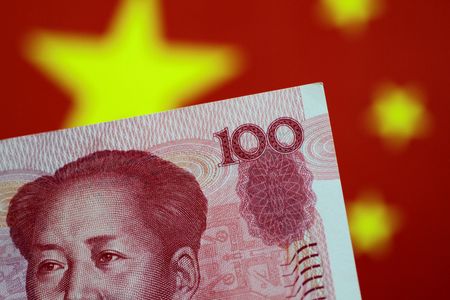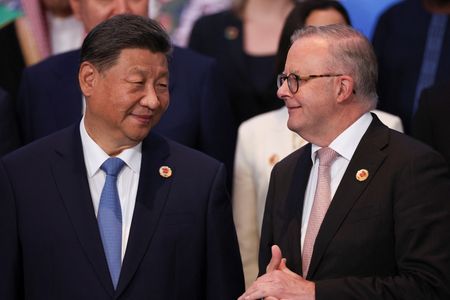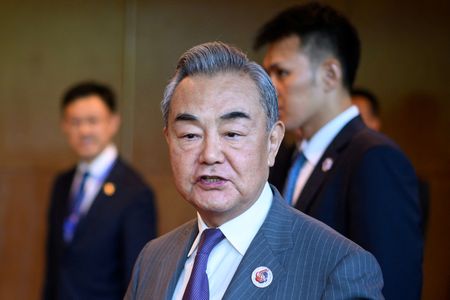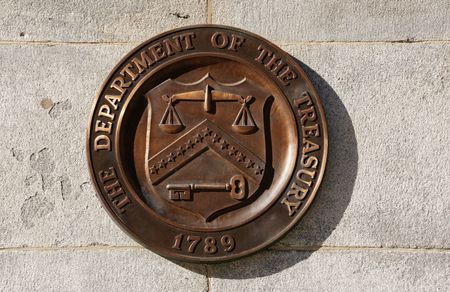By Ethan Wang and Kevin Yao
BEIJING (Reuters) – China’s new yuan loans likely surged in January compared to December but still remained below the record level hit a year earlier, a Reuters poll showed on Friday, as subdued credit demand continued to weigh on lending.
Chinese banks are estimated to have issued 4.5 trillion yuan ($617.75 billion) in net new yuan loans last month, up sharply from 990 billion yuan in December, according to the median estimates of 13 economists.
But the expected new lending would still be lower than the record 4.92 trillion yuan issued in new loans in January 2024.
Chinese lenders usually front-load loans at the beginning of the year to get higher-quality customers and win market share.
The year-on-year fall was partly due to fewer working days last month, with the Lunar New Year holiday falling earlier than usual this year.
“Fewer working days (19 in January 2025 vs. 22 last year), low risk appetite and/or credit demand as indicated by falling bond yields and PMI misses could weigh on loan extension,” analysts at Citi said in a note.
China’s manufacturing activity unexpectedly contracted in January, an official factory survey showed, hitting its weakest since August and keeping alive calls for stimulus in the world’s second-largest economy.
China’s new bank lending totalled 18.09 trillion yuan in 2024, down from a record 22.75 trillion yuan in 2023 and hitting the lowest since 2019, as the economy grappled with a prolonged property crisis, deflationary pressures and cautious spending by households and businesses.
Moreover, local government debt challenges have constrained credit appetite.
China’s economy grew 5% last year, meeting the government’s target, although in an unbalanced fashion as exports and manufacturing outpaced domestic consumption.
China is expected to maintain a growth target of around 5% in 2025.
That could pose challenges for policymakers striving to achieve a similar growth performance this year, especially as trade tensions with the United States escalate.
U.S. President Donald Trump has slapped an additional 10% tariffs on all Chinese imports, and cancelled the so-called “de minimis” exemption on low-value shipments, further tightening the inflow of Chinese goods.
China retaliated by announcing tariffs up to 15% on some U.S. imports starting February 10, leaving room for potential negotiations.
At a gathering ahead of the Lunar New Year, Chinese President Xi Jinping said the country will resolve “external shocks” in 2025 to sustain economic recovery.
Analysts expect more cuts in key lending rates and bank reserve ratios in the first quarter, even as the yuan faces depreciation pressures.
Outstanding yuan loans likely rose 7.3% in January from a year earlier, the poll showed, down from the 7.6% pace in December.
Broad M2 money supply growth last month was seen at 7.2%, slowing from 7.3% in December.
China’s local governments issued a net 4.02 trillion yuan in special bonds in 2024, exceeding the annual quota, finance ministry data showed.
Any acceleration in government bond issuance could help boost growth in total social financing (TSF), a broad measure of credit and liquidity.
Outstanding TSF grew 8.0% at the end of December, improving from the record low of 7.8% seen in October and November.
TSF in January likely grew to 6.4 trillion yuan from 2.86 trillion yuan in December, the poll showed.
The central bank is also set to release the revised M1 money supply data for the first time, after adding personal demand deposits and client provisions at non-bank payment institutions to the statistical criteria.
($1 = 7.2845 Chinese yuan renminbi)
(Reporting by Ethan Wang and Kevin Yao; Polling by Vijayalakshmi Srinivasan and Devayani Sathyan in Bengaluru and Jing Wang in Shanghai; Editing by Lincoln Feast.)









